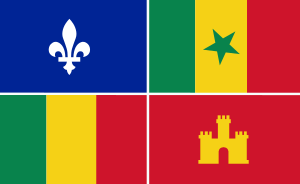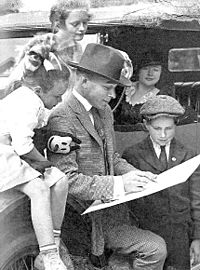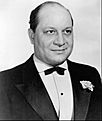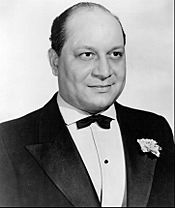Creoles of color facts for kids
 |
|
| Total population | |
|---|---|
| Indeterminable | |
| Regions with significant populations | |
| Louisiana, Texas, Nevada, Alabama, Maryland, Florida, Georgia, Detroit, Chicago, New York, Los Angeles and San Francisco | |
| Languages | |
| English, French, Spanish and Louisiana Creole (Kouri-Vini) | |
| Religion | |
| Predominantly Roman Catholic, Protestant; some practice Voodoo | |
| Related ethnic groups | |
| Cajuns, Louisiana Creole people, Isleños, Alabama Creole people, Québécois
Peoples in Louisiana Métis Acadians French Americans French-Canadian Americans Cajuns Native Americans Caribbean Americans Spanish Americans Portuguese Americans Afro Latino Cuban Americans Dominican Americans Stateside Puerto Ricans Canarian Americans Mexican Americans Italian Americans German Americans Irish Americans |
The Creoles of color are a special group of people with a rich history in the United States. They mainly developed in areas that used to be French and Spanish colonies, like Louisiana (especially New Orleans), Mississippi, Alabama, and parts of Florida.
The word "Creole" was first used by French colonists in Louisiana. It described people born in the colony, not in France. The term "Creoles of color" usually meant Creoles who had mixed European and African backgrounds. Many of these people were born free or were freed from slavery. They formed a special group called Gens de couleur libres, which means "free people of color." Today, some Creoles of color are part of the larger Black culture, while others keep their unique identity within the African American community.
Contents
A Look Back in Time
The word Créole comes from Latin and means "to create." It was first used in the "New World" by the Portuguese for local goods. Later, the Spanish used it for anyone born in the New World. French colonists used Créole to tell themselves apart from settlers born in other countries, like English-speaking Americans. It meant people born in Louisiana whose families were not originally from that land.
Old documents show that "Creole" could mean white people, mixed-race people, or Black people, whether they were free or enslaved. The phrase "of color" was added to make it clear, because "Creole" by itself didn't always mean a specific race.
Life in Colonial Louisiana
During French rule, society had different levels. There were wealthy Creole families, a successful and educated group of mixed-race Creoles (who had European, African, and Native American roots), and a larger group of enslaved Africans and Creole farmers. French laws, like the Louisiana Code Noir, tried to control how different races interacted. Even though these laws restricted relationships between races, they still happened.
Mixed-race Creoles of color became known as a distinct group: Gens de couleur libres (free persons of color). They were officially recognized as free by the Louisiana Supreme Court in 1810. Some signs of Creole identity included being Catholic, working hard, loving books, and speaking French (whether standard French, Creole, or Cajun). For many, being a descendant of the Gens de couleur libres is a key part of being a Creole of color.
Many Creoles of color were born free. Their families often had some of the same advantages as white people. This included owning property, getting a good education, and serving in the military. Before the American Civil War, their society was organized by class, and they usually married within their own group. It was rare for Creoles of color to marry enslaved people, even though it wasn't illegal. Some wealthy Creoles of color even owned enslaved people themselves. However, others, like Thomy Lafon, used their position to support the movement to end slavery.
Another Creole of color, a rich farmer named Francis E. Dumas, freed all his enslaved people in 1863. He then organized them into a company for the Louisiana Native Guards, where he served as an officer.
Changes After the Louisiana Purchase

Creoles of Color had been part of the militia (a group of citizen soldiers) for many years under both French and Spanish rule in Louisiana. For example, about 80 free Creoles of Color joined the militia that fought in the Battle of Baton Rouge in 1779.
After the United States bought the large Louisiana territory in 1803, the Creoles of color in New Orleans offered their help and promised to be loyal to their new country. They also swore loyalty to William C. C. Claiborne, the governor of the Louisiana Territory.
A decade later, in December 1814, the British started landing troops near New Orleans. The Creole militia volunteered to fight in the Battle of New Orleans.
After the Louisiana Purchase, many Creoles of color lost their special social standing. This happened even though they had served in the military and had a good position in French society. Many new people moved to Louisiana and New Orleans from other parts of the United States. These new settlers brought their own ideas about race, where anyone with African ancestors was seen as "black" and treated as a second-class citizen. This was true no matter how educated or wealthy they were. Former free Creoles of Color were then treated similarly to newly freed enslaved people.
A notable Creole family was that of Andrea Dimitry. He was a Greek immigrant who married Marianne Céleste Dragon, a woman of African and Greek background, around 1799. Their son, Alexander Dimitry, became a Creole author and educator. He was the first person of color to represent the United States as an Ambassador to Costa Rica and Nicaragua. He also became the first superintendent of schools in Louisiana. Andrea Dimitry's children were part of the upper-class Creole society. Many of them went to Georgetown University. One of his daughters married into the English royal House of Stuart. Some of the Creole children were important members of the Confederate Government during the American Civil War.
Moving On: Creole Migrations
Creoles of color moved away from Louisiana in two main waves. The first wave happened between 1840 and 1890. Most people moved to areas outside of big U.S. cities or even to other countries, where ideas about race were more flexible.
The second wave of migration for Creoles of color took place between 1920 and 1940. This happened because Creoles of color were increasingly classified as "black" in society, which changed their social standing.
Fighting for Rights
Because many Creoles of color had better education than newly freed enslaved people, they played a big part in the fight for civil rights. They held political jobs during the Reconstruction period after the Civil War. They helped bring newly freed people into the political system.
Later, white politicians regained control of state governments in the South. They used fear and unfair laws to stop Black people and other Republicans from voting. Throughout the late 1800s, they created Jim Crow laws and customs to enforce white supremacy. They made it very hard for most Black people, including Creoles of color, to vote. They used things like poll taxes (a fee to vote), literacy tests (tests to read and write), and "grandfather clauses" (rules that said you could only vote if your grandfather could). This took away political power from African Americans.
Creoles of color were among the African Americans affected when the U.S. Supreme Court made a ruling in the case of Plessy v. Ferguson in 1896. The court decided that "separate but equal" facilities were legal. This allowed states to have Jim Crow rules on trains and later on buses that traveled between states.
On June 14, 2013, Louisiana Governor Bobby Jindal signed a law (Act 276) to create a special "I'm Creole" license plate. This was done to honor the contributions, culture, and heritage of Creoles.
Education and Learning
It was common for wealthy French-speaking Gens de couleur to study in Europe. Some chose not to return because they had more freedom in France. If they didn't study abroad, or if they couldn't attend white-only schools in the U.S., Creoles of color were often taught at home or went to private schools. These private schools were often paid for and taught by rich Creoles of color. For example, L'Institute Catholique was funded by Madame Marie Couvent, and writers Armand Lanusse and Jonnai Questy taught there.
In 1850, it was found that 80% of all Gens de couleur libres could read and write. This was much higher than the white population in Louisiana at that time.
Contributions to the Arts
Literature
Before the Civil War, well-educated French-speaking gens de couleur libres wrote many literary works. A lot of these writings, like those in Les Cenelles, described the lives of enslaved people. One example is Le Mulatre (The Mulatto) by Victor Séjour, a Creole of color. Other writings explored themes of love and religion, and many were similar to French romantic literature. Pieces written by Creoles of color were often featured in newspapers, both locally and abroad. Even when it was forbidden to talk about race before the war, these Creole writers found ways to use French themes to subtly comment on race relations in Louisiana. Their works became popular with all readers.
Music
Some Creoles of color in 19th-century Louisiana trained as classical musicians. They often studied with teachers from the French Opera House. Some even traveled to Paris to finish their studies. Creole composers from that time are mentioned in books like Music and Some Highly Musical People by James Monroe Trotter and Nos Hommes et Notre Histoire by Rodolphe Lucien Desdunes.
Notable Classical Creole Musicians
- Basile Barès
- Edmund Dédé
- Laurent Dubuclet
- Louis Moreau Gottschalk
- Lucien-Léon Guillaume Lambert
- Charles Lucien Lambert
- Sidney Lambert
- Victor-Eugene McCarty
- Samuel Snaër
Jazz Musicians
Creoles of color from the New Orleans area were very important in the early days of jazz music. Here are some famous names:
- Vernel Fournier
- George Baquet
- Paul Barbarin
- Louis Barbarin
- Danny Barker
- Emile Barnes
- Paul Barnes
- Sidney Bechet
- Barney Bigard
- Louis Cottrell, Sr.
- Louis Cottrell, Jr.
- Joe Darensbourg
- Louis Nelson Delisle
- Cie Frazier
- Illinois Jacquet
- Freddie Keppard
- Lawrence Marrero
- Jelly Roll Morton (Ferdinand J. LaMothe)
- Albert Nicholas
- Kid Ory
- Manuel Perez
- Jimmy Palao
- Alcide Pavageau
- Alphonse Picou
- De De Pierce
- Armand J. Piron
- John Robichaux
- Omer Simeon
- Lorenzo Tio
- Eddie Bo
See also
- List of Louisiana Creoles
- Louisiana Creole people
- Louisiana French
- Louisiana Creole
- Cane River Creole National Historical Park
- Melrose Plantation
- Faubourg Marigny
- Tremé
- Little New Orleans
- Frenchtown, Houston
- Magnolia Springs, Alabama







